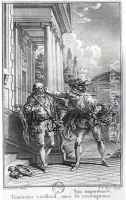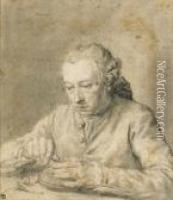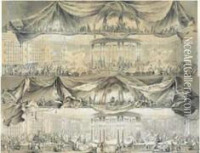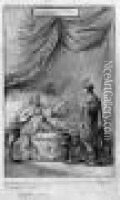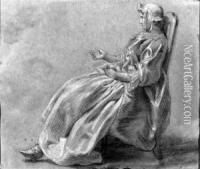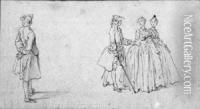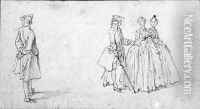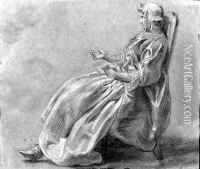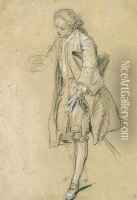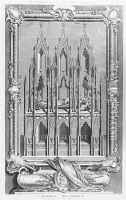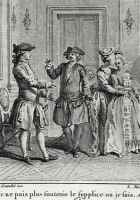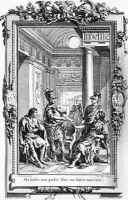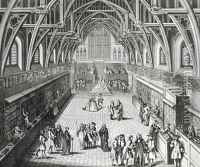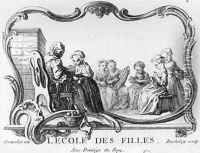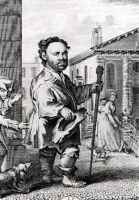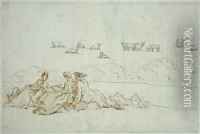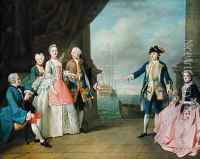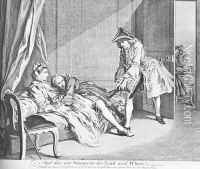Hubert-Francois Gravelot Paintings
Hubert-François Gravelot, a prominent French illustrator and engraver, was born in 1699 in Paris, France. He is best known for his significant contribution to the French Rococo style and for influencing the British book illustration style of the 18th century. Gravelot initially trained under the painter Jacques-Antoine Arlaud in Geneva and later studied at the Royal Academy of Painting and Sculpture in Paris. His early works were heavily influenced by the Rococo movement, which was characterized by ornate and decorative elements, asymmetrical designs, pastel colors, and light-hearted themes.
In the 1730s, Gravelot moved to London, where he became a pivotal figure in the development of British book illustration. He contributed to the embellishment of several books with his exquisite designs and engravings, thereby leaving a lasting impact on the visual culture of the time. His illustrations often featured elegant figures, intricate landscapes, and delicate ornamentation, which were well received and celebrated for their artistry and wit.
Gravelot collaborated with prominent British artists and engravers, such as William Hogarth and Francis Hayman, and his work influenced the likes of Thomas Gainsborough and other English artists. He also taught at St. Martin's Lane Academy, an important precursor to the Royal Academy of Arts, where he instructed a generation of British artists in the Rococo style.
After spending nearly two decades in England, Gravelot returned to Paris in the 1750s, where he continued to work as an illustrator, engraver, and decorator. He remained active in the Parisian artistic community until his death in 1773. Throughout his career, Gravelot's artistic legacy was marked by the fusion of French elegance with English practicality, and his works continue to be appreciated for their contribution to the Rococo style and the advancement of book illustration as an art form.
